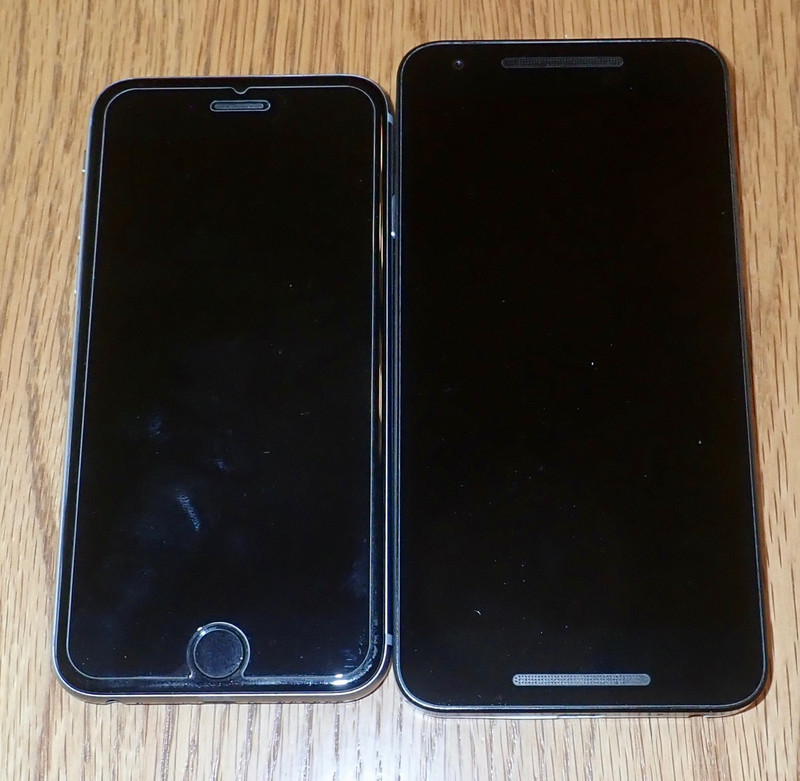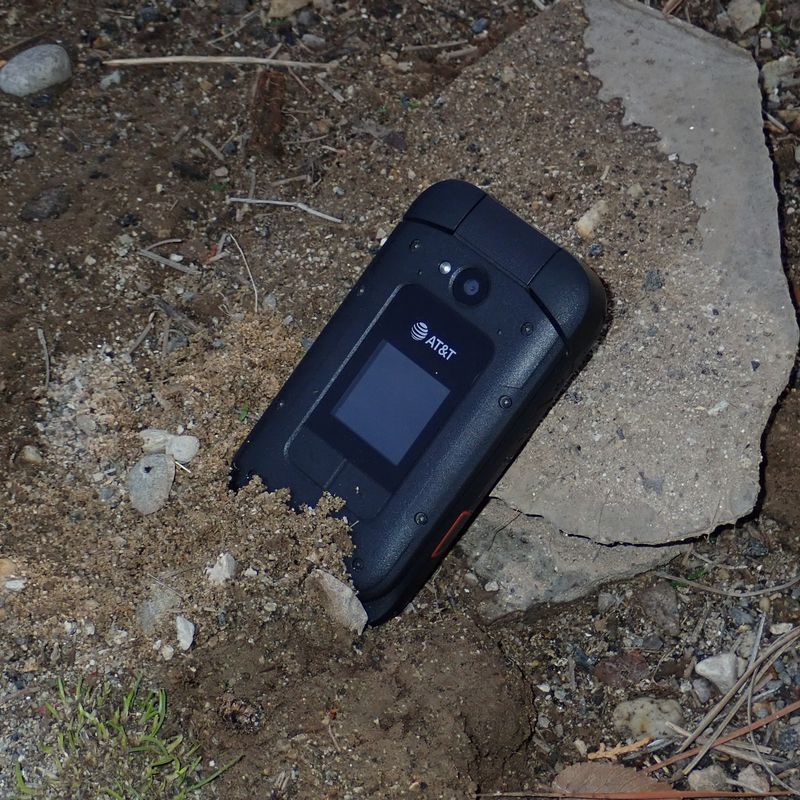Summer, 2007. Slightly more than a decade ago. Music was painfully early 2000s. The Simpsons were in their 18th season. The UK banned smoking in public places. And Apple’s “iPhone” ended up in the hands of consumers for the very first time.
It was weird - it didn’t even have a keypad. It didn’t flip. It didn’t even come with Snake (which was roughly the best game ever)! But, as is incredibly obvious now, it was the future of phones. A black rectangle into the world, with a camera that wasn’t awful, controlled by tapping on the screen. Without a real keyboard. Shut down, it was a black rectangle.
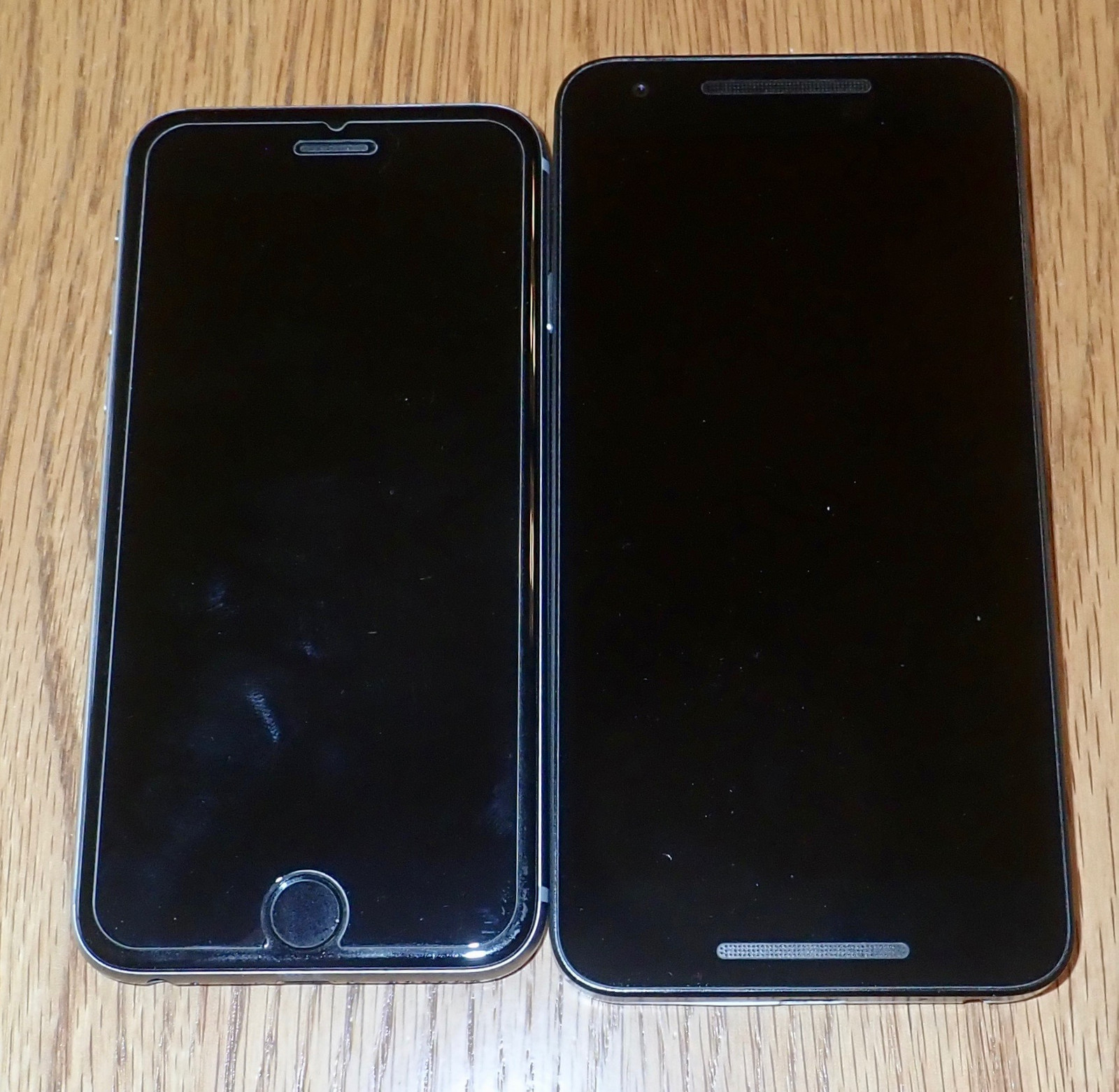
Fast forward a decade. Nearly everyone has their own black rectangle. In 2016, 1.5 billion smartphones went to end users. That’s not how many have been sold total - that’s how many were sold in one year.
And they’ve changed life as we know it - for good, and for bad. We’ve let the psychology of Las Vegas into our pockets, and it turns out that this is actually a really bad idea. But there are glimmers of hope, and companies no less than Apple themselves have started realizing this and helping us tame the smartphone - and, by extension, social media.
So, dive on in and let’s explore phones!
A Brief History of (Modern) Communication
I’m in my mid-30s, which puts me a bit on the young side for the modern communication transition, but I do recall most of the key points. I was in either Junior High or High School when we first got internet access (dialup - kerbong, kerbong!). I talked to people on the telephone, back before “landline” was a concept one had to distinguish. And I’ve played with enough tech to understand a lot about how this transition has gone over the past two decades. Let’s recap!
Before about 1995, “The Internet” wasn’t a particularly common thing for people to have access to outside university networks. There was quite a bit of AOL (endless floppies, then CDs, with ever-increasing numbers of free minutes - yes, you paid for internet access by the minute), some Compuserve, and BBSes. Ask your parents about those. But, fundamentally, person-to-person communication was done with telephones, which were location-based - not person-based. You called a location and asked for a person instead of contacting a person directly - “Hello, is so-and-so available?” Sometimes they were, sometimes they weren’t, sometimes they were busy. If it wasn’t particularly important, you could leave a message - people had phone message notepads by the phone (crazy, I know), and would take messages. Or, at least, claim to take messages. I have no idea how many messages went undelivered because instead of taking a message, someone just said they had, and forgot to mention that someone called. If nobody answered, sometimes you could leave a message on an answering machine.
By the mid-90s, you could get proper dialup internet access in a lot of areas, and this is when my family jumped onboard. We got a second phone line for the house (mostly for modem use), and I upgraded to Windows 98 SE because it added internet connection sharing - with a pair of Ethernet cards and a crossover cable (another thing that doesn’t really exist anymore - auto sensing network ports are awesome), you could share the internet between two computers with one connection! This was important, since only one modem could be using a phone line at any given time. With this setup, I could be online, and my dad could use his computer on the internet as well! We could even share files and a printer between them! Magical!
At this point, various instant messenger services were the common way to communicate with people online, and this was the start of “person to person” communications. AOL Instant Messenger (RIP) was the common one in my circles, though Yahoo had a bit of use, ICQ (“I Seek You”) was a thing, and, of course, IRC had a thriving community of people connected. I learned assembly programming from some very helpful individuals in #calcti and #ticalc (Z80, baby!).
In the late 90s, we finally got an always-on cable connection, and I delved into web hosting on my computer. This was a 486 DX2/66MHz box upgraded to a whopping 24MB of RAM. Yes, your watch is more powerful. No, your watch is not more useful. I ran a web server with cgi-bin scripts on it, got into all sorts of trouble with my high school administration for my website (mostly because I republished their salaries from public information, though they claimed they were upset about the blonde jokes and the fact that I supposedly had all the answers to all the tests ever given on there - news to me!), served without outage over the Y2K transition, and generally had a blast.
By the late 90s, cell phones were starting to be a thing, but they were mostly car phones. Miami Vice style - big units that sucked power, ran unencrypted on analog frequencies (you could just listen in if you happened to have the right sort of receiver - fortunately, software defined radio wasn’t really a common thing yet), and were stunningly expensive to use ($0.25/minute was a common rate, if I recall properly). There was no texting, and a “data plan” was a foreign concept. But, if you wanted, you could talk to a person directly (and phone numbers started to be “personal” instead of “locational”).
Palm pilots were definitely a thing here. I loved my IIIxe.
In the first half of the 2000-2010 era, cell phones kept shrinking, networks popped up everywhere, and battery life got great. Candybar and flip phones battled it out for supremacy (everyone had an opinion on this), phones needed charging roughly every week, and texting started to be a thing - though not terribly common. Person to person communication was still voice, and, at least among college students, AIM and IRC were still the popular ways to communicate. Message boards started taking off as well, with various experiments (mostly forgotten for good reasons). I ran a college IRC server on a pair of Mac SE/30s (16MHz 68030 CPUs, something like 8MB or 12MB of RAM, and OpenBSD). The fileservers below the SE/30s were little utility boxes.
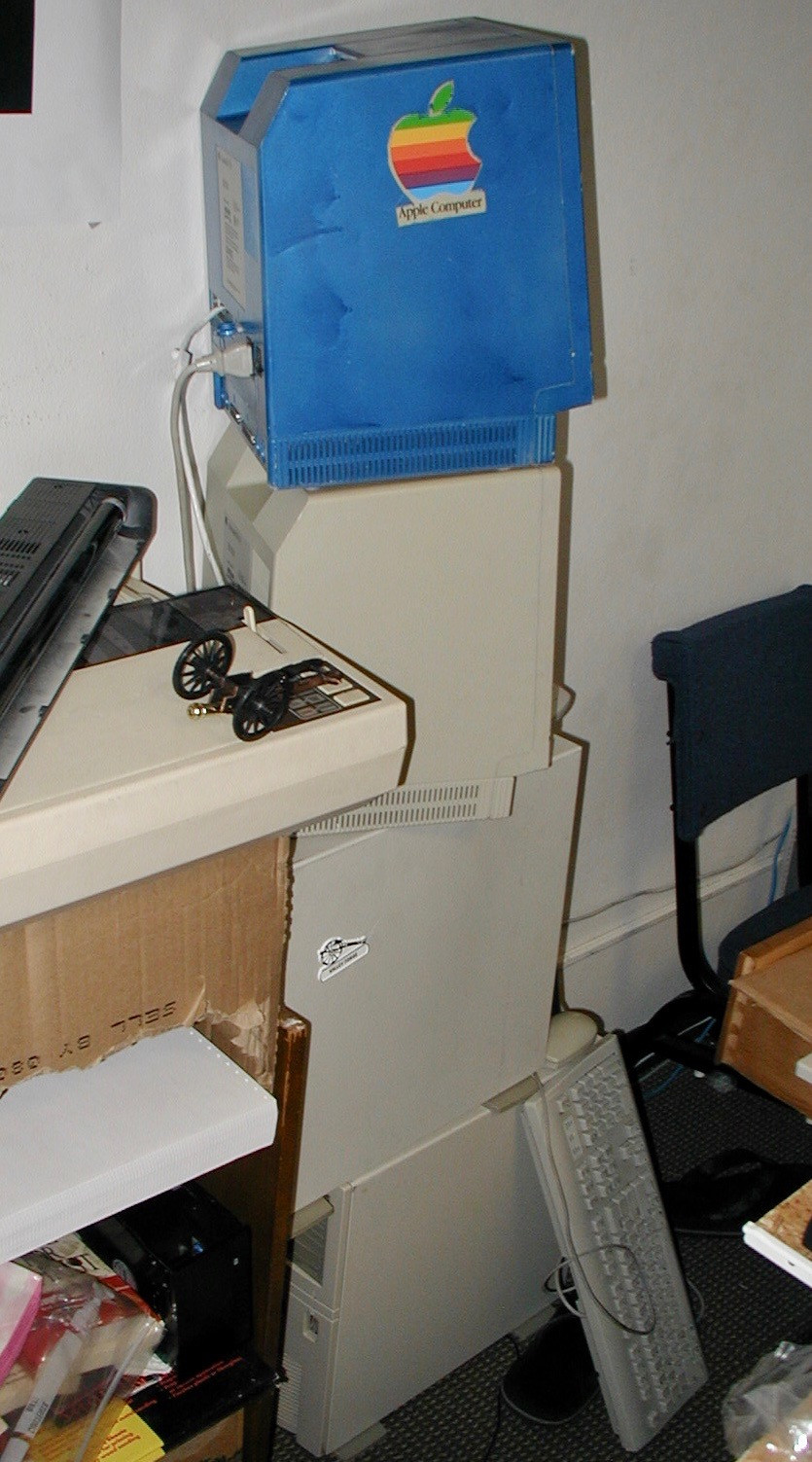
Yes, you could run a BSD on an SE/30. It confused people who saw the displays to no end to see a text console on what was very clearly a Mac-in-a-Box. It struggled a bit with the amount of network traffic in the dorms, and God help you if you wanted to use SSH - I either did my admin work locally or over telnet. With a 16MHz 68030 (roughly a 386), there just wasn’t much crypto that was going to happen.
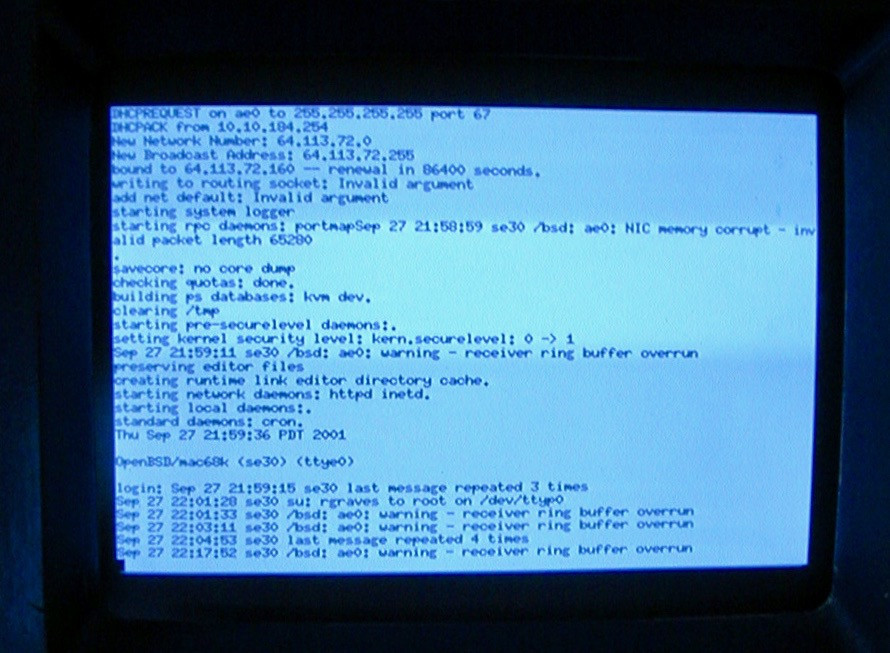
By 2005 or so, cell phones were reasonably common, so most people had their own number. There were still plenty of people who didn’t, but it was decent odds that someone you met had a cell phone. They still lived in your pocket, texting was mostly done with T9 (ask your parents if you have no idea what this is, since they’ll likely remember it), and battery life was still days on end. You had early data networks if you were wealthy or on a corporate plan, but the browsers were terrible.
Then, in 2007, everything changed.
The Early Smartphone Era (2007-2011)
Steve Jobs was an amazing presenter (if you ever do presentations, you should watch some of his keynotes - they are an incredible work of art), and the original iPhone presentation was no exception. This was something new, exciting, and entirely unseen before! An iPhone! A “smart” phone (to differentiate it from the normal phones everyone had).
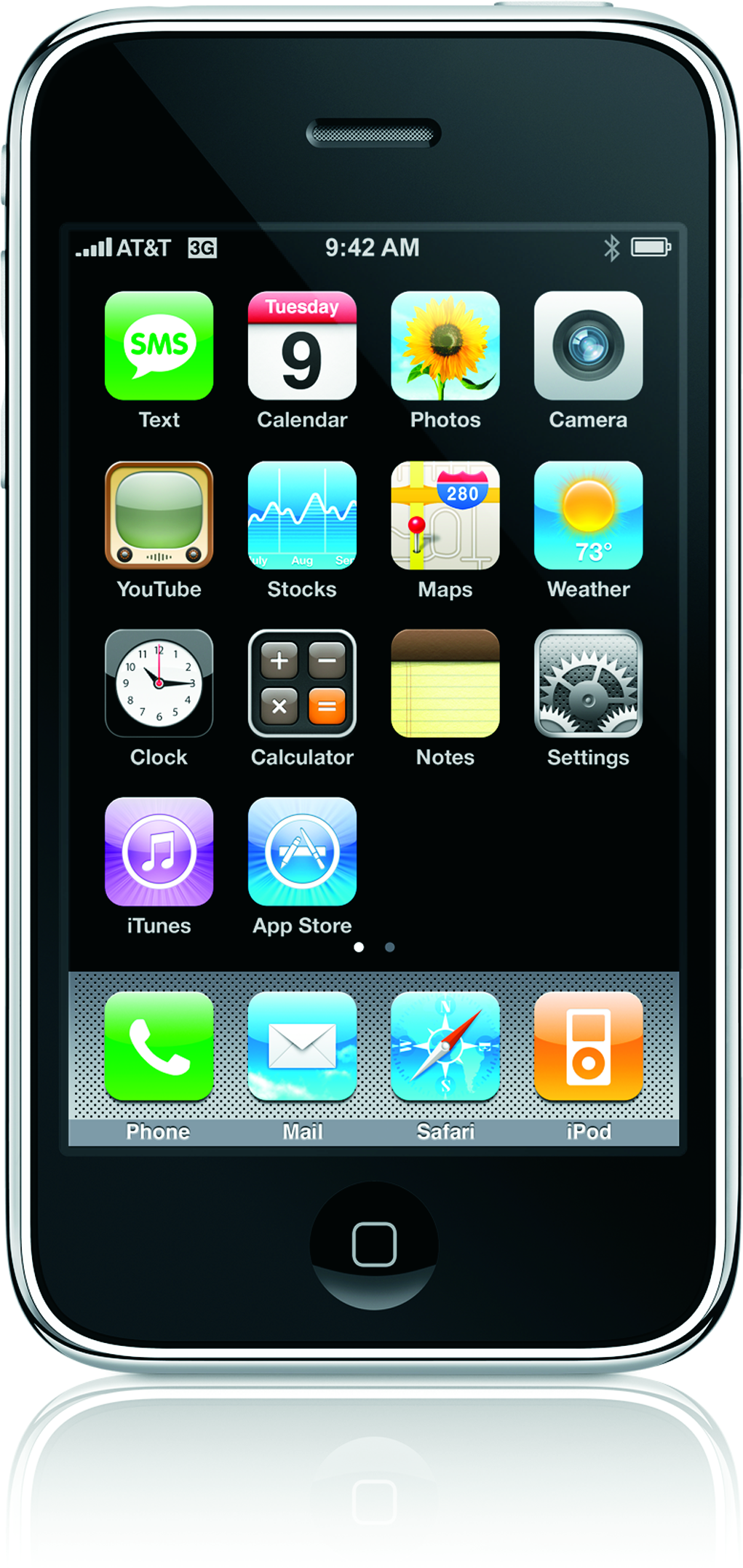 |
| Apple Press Kit Photo of the Original iPhone |
It had a browser. A real, actually useful browser that could access normal desktop websites! It had the best email anyone had seen on a phone! You could access your voicemail visually without having to deal with those stupid menus! And if you touched the screen with multiple fingers, it actually recognized the separate touches!
The early iPhones didn’t have a concept of third party apps. The phone came with a browser, an email client, a few other things, and that was it. You could jailbreak it and install third party stuff, some of which was pretty good, but it took a while for Apple to catch on and work out the concept of third party apps.
Of course, as soon as the iPhone came out, all the other cell phone makers realized that they were very, very far behind the times now, and set out to create their own black rectangles. You got neat devices like the Nokia N900, as well as Android, which obviously won out over other phone operating systems of the time.
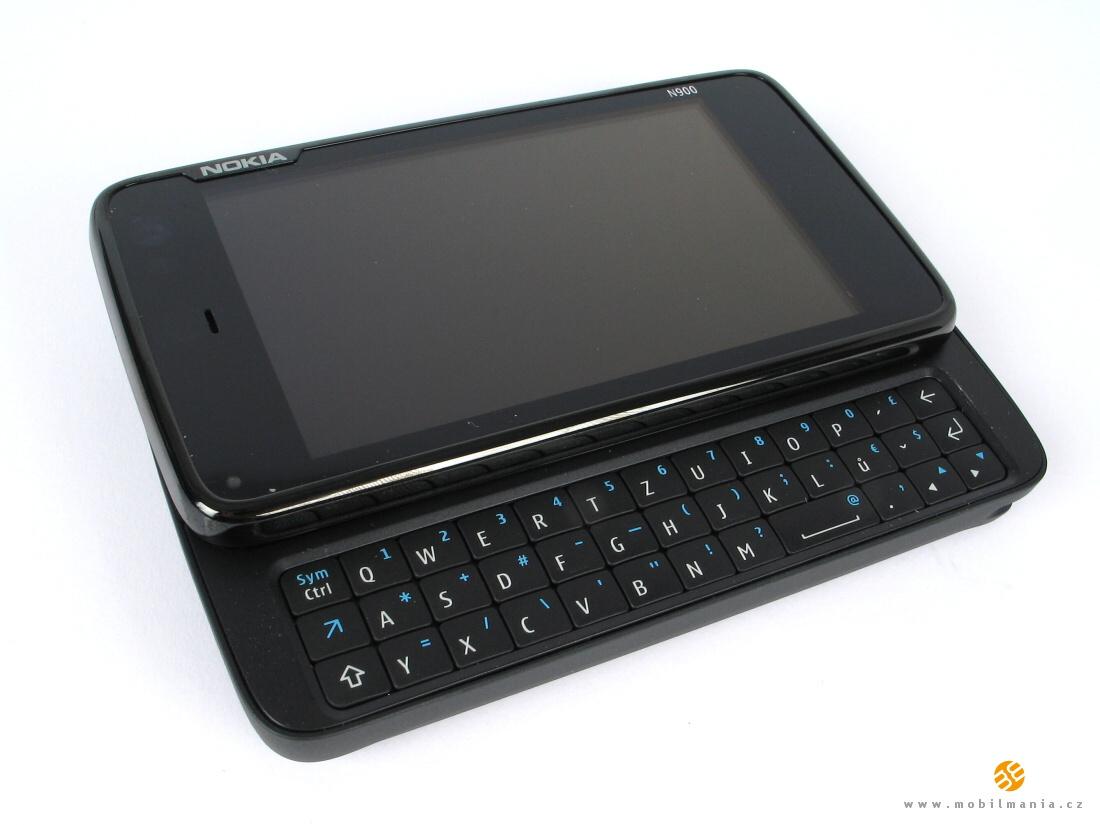
So far, nothing had really changed. AT&T’s network melted down under the data load of real browsers, they sent some 300 page bills to people in large boxes, and life went on. A smart phone was just a really expensive cell phone with some really bad battery life (only a day), though by this point, most people had a phone of some variety or other, and communications were increasingly text message based.
A year after the iPhone came out, the App Store opened (July 2008). Now you could get third party applications, and there was a genuine frontier rush to find out what you could do with this form factor. Applications were either free (free-free, possibly with a few ads), or paid (pay once). There was no concept of In-App-Purchases, so games tended to either be ad supported, or a well thought out game you purchased and played. In general, games of the time were simple, but complete and enjoyable.
Then, in October 2009, Apple made a decision that, in my quite strong opinion, led directly to the ruin of smartphones (and possibly all of gaming). In-App Purchases. The concept sounded good - you could buy new levels in a game you liked, or buy new features for some utility program. You could get subscription access to data services (I use this extensively with ForeFlight - aviation maps/flight planning/georeferenced approach charts/etc), and it was quite useful. It opened up an awful lot of new concepts - and, importantly, Apple got a cut of each in-app purchase.
Unfortunately, it also led to quite a few companies working out a particularly evil and predatory business model for monetizing smartphones and tablets.
The Smartphone Addiction Era (2012-????)
If you’ve been skimming along (isn’t it nice that you can do that instead of being forced to watch a video at my pace?), now is when I want you to start paying attention. I’m talking about the last 6 years of smart phones and social media, which is when the industry has gone from playing around with concepts to fine tuning addiction triggering techniques. This is the era of weaponized addiction, aimed at extracting “value” (attention) from people - and this is when smartphones and social media started becoming truly evil.
If you feel “evil” is too strong a word, you can replace it with “predatory” and have the same end result here. I’m sure you can think of a few other choice words as well, none of them nice.
Late 2012 is when smartphone ownership, at least in the United States, approached the 50% mark. Like many other devices, smartphones are subject to a network effect. If you’re the only person with a smartphone, there’s not a whole lot you can do other than text and make phone calls. If everyone has a smartphone, everyone has access to the various social media services, mobile games (that pester other people to join or help out), and all the other supposed joys of smartphones.
The fruit of in-app purchases ripened here in the mobile game world. Game companies realized how they could make the most money by seeding their apps to as wide a gamer base as possible, making their games as addictive as possible, and then breaking their game at some point so people had to pay to get past a particular point. There are many ways this has been done, but they all are fundamentally the same. Get someone addicted, then give them a difficult time, but suggest that they can pay just a tiny bit of their real world cash to get some small advantage and get past this point. Then, ramp that up over time, requiring more and more cash (but only a tiny bit more than last time, and in some variety of in-game credit that comes in weird sized units so you always have a little bit left over you don’t want to “waste”).
You lose most of your gamers at this point - lots of people won’t pay a dime to play, and simply stop playing (or grind to get the in-game currency needed). But there are those (the term in mobile gaming is “whales”) who will pay - and will pay a lot. Those are the bread and butter of the mobile gaming industry.
I’ve used the comparison that this is like Las Vegas in your pocket, but it’s actually far worse. In Las Vegas, you can actually win. It’s certainly not the common outcome, but it’s possible to go to Las Vegas, gamble, and come away with more money than you started with. Not only is it possible, it’s required - if nobody ever won big in Vegas, the place would cease to exist. Cell phone and tablet games don’t even give you that option - if you play some casino simulator or slot machine game on your tablet, I can 100% guarantee you will lose money - there’s no way to “win” and actually cash out. Sure, you’ll sometimes have more virtual coins than you did before, but there’s literally no way to walk away, cash out, and carry on your life with an extra few grand in your pocket. None. It’s worse than Vegas, and it’s with you at all times. It can notify you and pester you to come back and play if you’ve gone too long without playing (for free - Vegas has to spend money to get you to come back). That’s pure, distilled, user-hostile evil.
Don’t believe me? Check out the “top grossing” app lists in… oh. Right. Apple removed those lists in iOS11, because they were almost entirely free to play games.
You can still find the list on the website (for now), though it doesn’t break down by paid or free anymore. It doesn’t matter, though. It looked almost identical to the Google Play lists, give or take a few places.
Google’s Play Store still has the list, and at the time I write this, the first non-free application is Pocket Minecraft at position 141. The next highest paid app in the list is Blooms TD 6. At position 286.
Still don’t believe me? Look at what mobile games have enough money to buy SuperBowl ads. They’re “free to play” - but believe spending millions of dollars for a 30 second ad spot to be worth it (and they’re almost certainly right).
Any free to play game makes money by being addictive and broken. It’s user-hostile, predatory, deliberately addiction-inducing behavior. They rely on intermittent rewards, notifications, and “Oh, just come in for a little bit to collect your energy crystals… hey, play a bit… hey, you could pay to get past this cooldown timer… wow, this level is super hard but there’s this upgrade you could buy…” type gameplay to try and get people to pay up. It’s broken gameplay. By design. And, worse, you have no idea if a level is actually “fairly beatable” or not. Presumably, it’s optimal for a game company to include levels that you can’t actually beat without paying up. It has to be broken, or people wouldn’t pay.
Long ago, when it first came out, I really enjoyed Angry Birds. It was a paid game, and it was a complete game (with new levels coming out regularly, which was very nice). Each level had a set of birds, and you knew that you could beat a level with the set of birds. It might be tricky, it might require a combination of skill and luck, but you knew it was possible.
I’ve tried playing it recently, and it’s become horrible - a mockery of the former glory. It’s nothing but an ad for all sorts of premium birds you can buy, or get one a day, or wait for the cooldown or… honestly, I didn’t even try to figure all the details out. It clearly wants me to buy bird upgrades, and that removes the whole fun of the game for me. I don’t know if I struggle with a level because I haven’t found the trick, or if I’m struggling with a level because it’s deliberately impossible to beat without extra birds or upgrades. It entirely broke the game for me, and I quite refuse to play it now. I’ve heard similar comments about the newer iterations of Plants vs Zombies (another game I quite enjoyed when it came out) - people run into levels that they can’t beat, and they don’t know if it’s even possible without some paid upgrade or other. This is not good game design - but it’s how you have to design a “free to play” game now.
Addictive Social Media
The various Social Media ecosystems on phones are no better. Around the same time that game companies learned to weaponize games, social media companies learned to weaponize their apps (and websites, but mostly cell phone apps because they’re far more suitable to addictive behavior).
Humans, in general, have a few particularly exploitable bits of wiring in their brains. It doesn’t impact everyone equally, but, in general, the following things are true:
- Intermittent rewards are far more addiction forming than consistent rewards. Skinner demonstrated this quite solidly back in the 1950s. Social media feeds used to be in chronological order, with most recently posted stuff at the top - and, importantly, it was consistent. Starting around 4-5 years ago, this changed - you can find people asking from 4 years ago how to restore the old behavior in Facebook’s feed. Now, it’s all algorithmically generated - and, importantly, random. Roll the dice, refresh the feed, pull the lever - you never know what you’ll get this time! From 2012, “Want to hook users? Drive them crazy!“ This was novel at the time, but it’s now everywhere because it works. It keeps users trapped in the “But maybe next time I refresh, I’ll see something amazing!” loop.
- We go nuts for numbers. ALL the social media apps now quantify how popular your posts (and therefore you) are, in near-realtime (at least, that’s what they want you to believe - might they be withholding a like notification until you’re just about to leave?). Likes, retweets, shares, whatever. You can go back and see just how popular you are for each post. This drives return visits - we want to see our numbers increasing. And this then feeds intermittent reward addictions - “This post got 75 likes, but my other one only got 25… what’s wrong with me?” So we try again. And again. Pulling the lever. “Engaging” with the service. They’re driving us crazy to keep us returning.
- “Daily streaks” are somewhat more addictive to humans than meth. They showed up fairly recently in some apps, and expect to see them more often, because they work. Humans get weird about the investment in having done something for some number of days, and the more days we have (there’s that number, going up by one), the more we feel invested in it. Get someone a hundred days of some streak or other and you’ll have them checking in daily for an awful long time. Snapchat is particularly evil about this, but “streak runners” will often run through serious injuries just to keep a streak alive. If you’re trying to figure out how to run through a broken leg to keep your streak, something, somewhere, has gone badly wrong.
- “I’ll just check this one thing…” never works. And the social media companies know it. Facebook is quite good at this, sending emails that have a preview showing the first few words of someone’s status update, but when you open the email, it’s just a link to Facebook. Click it, and they hope you’ll get lost in Facebook. They also send fairly creepy “So-and-so just updated their status…” messages about people you haven’t spoken to in years, “You have 57 new notifications, 136 new posts, 42 new photos, and 3 new invites,” and other lures to try and get you back in. Just once. Just for now. It’ll be quick! It never is. If you’ve never seen one of these emails, try not logging into Facebook for a week and the torrent will start. The “unsubscribe” link in each of those also only unsubscribes you from each category of notification emails - and there’s no way to pick and choose on the website. All you can do on the website is turn off email entirely. It’s quite user hostile, at least if you want to control what you see, when.
There are more, but these are the most obvious weapons used. The ones that work? Expect them to show up more and more in different apps as everyone tries to out-addiction each other.
The Fruits of Addictive Smartphones
What better way to measure the results of a global experiment than by the fruits?
Depression and suicide among teenagers? Up.
Navigational ability? The ability to get around without a GPS guiding you? Down.
Ability to concentrate on deep work tasks and other ⌘T twit
⌘T reddi
⌘T gmail
⌘T face
⌘T instagr
er… Sorry. Where was I? Something about concentrating, I think…
Leave your cell phone in your glovebox (not your pocket) next time you go out and just look around. I was stunned recently to see someone walking down the street - reading a book. People heads down on the street are normal, but a real paper book? I’ve seen people come to social events and then literally spend the entire time in their cell phone. Doing what? No idea. I clearly need a better cell phone battery…
Look at it in your own life. Are you happier when you spend lots of time heads down in a tiny screen looking at a few million glowing dots? Or happier when you put the screen down and actually talk to people and interact with the world around you (without mentally framing photos of it for social media)? If you don’t know because it’s been a long time since you’ve tried interacting with the world directly, try it. If you don’t know because you still don’t have a smartphone, well… you’re not missing much. Trust me.
Humans are social - but social media is a depressing shadow of a substitute for actually getting to know other people. Getting fed an endless stream of nothing but the best (or, often, the staged highlights) of other people’s lives is a sure path to feeling inadequate and depressed.
I’ve seen this in my own life - I started questioning how much I relied on a smartphone around two years ago, and have been aggressively finding ways to cut back. A year back, my wife (for totally independent reasons) quit the bulk of her Facebook use (she searches for events but won’t use it from her phone and won’t scroll in the news feed). We’ve both found we have massively more time on our hands (even though neither of us were “heavy social media users”), and I’ve certainly noticed the improvement in concentration and ability to do long form reading. We both read radically more books than we used to, and have quite a bit more quality time in the evenings, talking or playing board games.
Another issue, which my wife has seen more than I have, is that it’s impossible to have a long form conversation with someone when one person is typing on a smartphone. For a long while, text conversations were with a proper keyboard. We’d schedule time with people to chat on AIM (or, now, Facebook Messenger). But more and more people don’t use a proper keyboard - and it’s bloody well impossible to have a good text based conversation with someone who’s on a smartphone. It’s hard to type quickly on a smartphone!
If you don’t believe me, try it yourself. https://typing-speed-test.aoeu.eu/ is a straightforward online typing test. Try it on a computer, and try it on a smartphone. I can manage a whopping 26 words per minute on a smartphone. On a keyboard, I’m around 108 (which is synthetically high for my normal typing, because I have to figure out what I want to write, but it’s a fair comparison). I’m literally 4x faster on a keyboard than I am on a smartphone. And that’s a laptop keyboard! I can casually bang out (on a laptop keyboard) the Guinness World Record speed typing phrase comparable to world record holders with a cell phone. There’s no comparison - a proper keyboard is far, far faster than a smartphone for data entry.
We’ve managed to replace long form online communication with scattered bits and pieces and incomprehensible fragments as well. People have said stupid things online for ages - http://bash.org is a timeless (and still updated) collection of mostly IRC quotes. But it differs, wildly, from http://www.damnyouautocorrect.com/ - which is fundamentally about the inability to communicate clearly from a smartphone keyboard. To often comedic effect.
But be honest with yourself. Are you happy with how much time you spend staring at a screen with a few million colored dots on it? Has it really improved your life, or has it simply been an endless distraction?
Peak Smartphone & Peak Social Media
So: With all that background out of the way, the core thesis of my (increasingly long) post is this. I believe we are near or slightly past “peak smartphone” and “peak social media.” More and more people are starting to look at their time spent on Facebook or other apps, and saying, “The rewards are not worth the cost.” In time, in mental clutter, in neglected personal relationships - whatever. I find more and more people I know cutting back their social media time, or quitting entirely, because they have gotten tired of being played like a fiddle by the algorithms.
Facebook users are posting less - and this has marketers worried. There’s talk about people moving to other platforms, but I know many people who are simply moving away from social media in general, and moving back to local person to person communication. Part of this is likely related to increasing legacy cruft - do you really care about someone from high school you literally haven’t spoken to in 15 years? But part of it is that people are just sick of the time waste. Don’t believe me? Quit Facebook for a week (and your other social media as well). You’ll be shocked at just how much more time you have for other projects, and how little other people will miss your social media presence. If you need a good excuse, give it up for Lent next year.
I’m seeing some signs of similar trends in general smartphone use as well. They’re addictive, distracting devices, and people who grew up before they were everywhere can certainly look back and see what’s missing in terms of mental sharpness and ability to concentrate. A smartphone is deadly to concentration, because it’s always there, always promising something new - even just sitting on the table. Something exciting might be happening. Just a quick peek!
At this point, smartphones and social media are so woven together that their destinies are bound. A smartphone is the dominant device used to access social media, and the dominant way that social media abuses addiction to get more eyeballs. The vast majority of social media access is from smartphones, and a website on a computer can’t be nearly as addictive as an app in your pocket that can notify you and ping you and generally badger you into just checking it real quick…
So I’m hopeful that we might be a turning point where more and more people are using their phones less and less, that we’ll see less social media distraction, and that we can begin the process of relearning the habits of thought that allow for focus and deep work.
The New Yorker, a few days ago, published an article titled, “The Deliberate Awfulness of Social Media.” I’m not the only one noticing this problem.
Even Apple has gotten on board with this in iOS 12 - but I’ll talk about that more later.
On Boredom and Projects
Have you been bored recently?
I assure you, it’s not a bad thing. Endless distraction at your fingertips is no way to live a life - but it is a great way to flush endless hours down the tubes for no gain. You’re no wiser, and no stronger, for having spent an hour scrolling in some feed, but you’ve certainly lost an hour of your life.
Set your life up to let you be bored. Let your mind wander. Read long books. Write long books. Write long blog posts. Create. Love. Meet people without technology.
Yes, I sound like I should be waving my cane, but I’ve been doing this, and it is so much better than endless distractions and social media. Boredom has entered my life again, and it drives much more useful things than yet another scroll of some endless feed. I’ll go out and make something. Or go pull weeds. Or write. All more useful than pulling the lever of a feed refresh.
Make Your Phone Boring
If you’re tired of this predatory nonsense in your life, I’ve got some helpful advice! I’ve been working for the two years on making my cell phone as genuinely boring as possible. I’ve determined that my cell phone being constantly in my life interferes with the actual relationships with people around me, so I’ve been trying to make it less and less present - which also means making it more and more boring so I don’t even miss it. Most of these ideas are pretty well orthogonal to each other - you can implement them all separately. So try them! See if you like it.
- Get rid of the games on your devices. I know, I know, you don’t pay, you only play until some point or other. It doesn’t matter. They’re addictive. They have to be, or some number of whales wouldn’t pay up. They’re designed to be that way, which means they’re harmful, even if you aren’t particularly prone to spend money for apps. They just haven’t found the right hooks for you - yet.
- Either remove the social media apps, or eliminate their ability to send notifications entirely. That means going into Settings and removing their notification privileges, because no matter what settings you pick in the app, they’ll find some excuse to send “Hey! Come look at me! Oh, please, we need your eyeballs so badly, pleeeassssee come back!!! That one guy posted after a few months! It’s someone’s birthday! Um, someone commented on something!!!” notifications your way. I find battery life is far better without Facebook installed, for what it’s worth…
- Find the apps that are your “fidget apps”. These are the ones that don’t tell you anything of importance, but that you open when you have a few seconds. For me, it was AdSense and Analytics - how many pennies this blog made today just isn’t important, but I certainly would check multiple times a day. Remove these apps. Maybe it’s a cryptocurrency tracker. Or a Dow Jones widget. As you find more fidget apps, remove them. If they actually serve a purpose but you don’t need that purpose when you’re out and about, remove them from apps permitted to use cell data.
- Remove cell data from apps you don’t need to use when mobile. It’s a quick toggle in settings. You can always turn it back on, but it’s a friction point and requires both time and effort. You can do this for things like browsers, if you want…
- Log yourself out of social media and distracting apps in the phone browser. This increases friction for “just checking…” type time wastes.
- Hide apps in folders (or not on your home screen, on Android). This increases the friction to use them, and they’re not sitting there, tempting you every time you turn your phone on. Get down to a single screen of apps, if you can. It’s a fun challenge. Do you actually need access to all that stuff on your phone?
You can also start taking more extreme steps to remove your dependence on a device that literally didn’t exist a decade ago. I’m a fan of leaving it in your car for social events. Carry a small notebook and pen instead (eBay) for phone numbers and email addresses - but you’ll force yourself to pay attention to people when you don’t have a distraction in your pocket.
Finally, there’s a trick I ran across recently that’s really, really handy.
Black and Chrome Phones
This is my phone’s home screen. This is a color picture of my phone’s home screen. It’s greyscale. I can toggle color back quickly if I need it (which is incredibly jarring), but this little trick radically reduces how visually appealing my phone is - and reduces how much I’m tempted to use it.
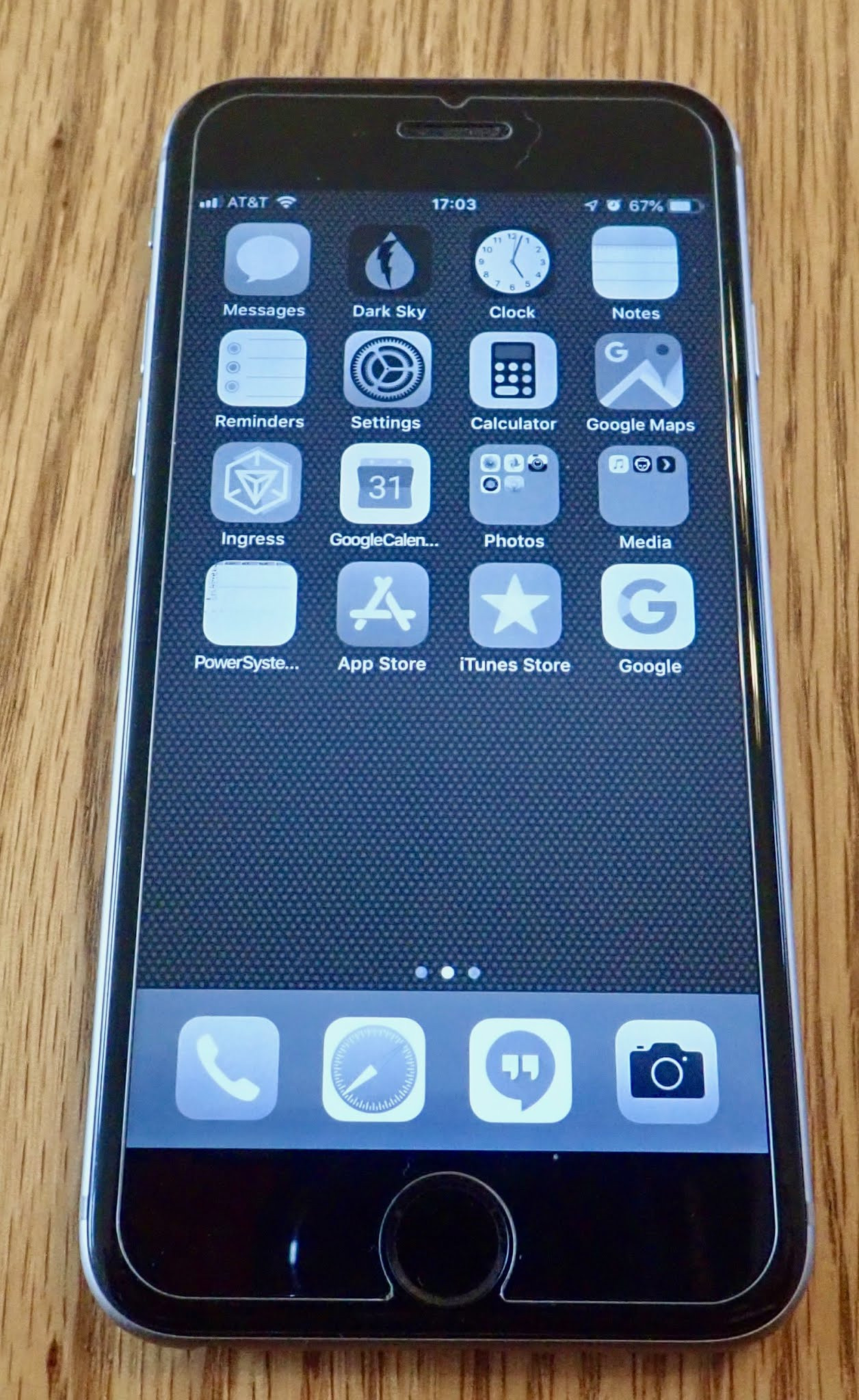
Interested? It’s easy! Try it. I promise, you’ll at least find the experiment interesting.
Past the Peak: Learning to Adapt
If I’m right about us being around peak smart phone and peak social media, this has some interesting implications going forward - because we’ve destroyed the older methods of communicating we used to use. Smartphones and social media have become the way to communicate, and when people move away from them, there’s no good fallback. This is something our church is struggling through - it used to be that Facebook would reliably let you reach just about everyone, and it no longer does.
Email? People don’t get email messages reliably. Inboxes are such a torrent of junk that important messages go unread. The various automatic folders content flows into (at least in Gmail and Inbox) don’t improve this - there’s now just a wide variety of “probably junk” folders people don’t really check. You can improve this in your life by aggressively trying to tame your inbox, unsubscribing from stuff you don’t read, and continuing this process for a while (Black Friday is a great day to spend unsubscribing - companies you purchased something once will be sending you material around then). But not everyone has done this.
AIM? Not a thing anymore. Text chat, if it’s done, is mostly done through Facebook Messenger. Google Hangouts works pretty well (and has good support for group chats), but not that many people are on it (and, the people who use it love it, so we can safely expect Google to cancel it in the next 5 years).
IRC? Well… OK, yes, IRC is still a thing. Sssh. Don’t tell anyone. But that’s where most useful communication about open source projects gets done these days.
Text messages and group texts? It works, but not always cleanly, and it’s hard to maintain the group for more than about a dozen messages before someone’s phone does something silly and messes it all up.
There used to be standard ways of getting in touch with people and getting information to them. We’ve lost those in the rush of social media, and now almost all the communication apps require phones (and many don’t work on a desktop, or at least aren’t designed around it). We’ve fragmented so badly that it’s hard to get messages out to people.
For a brief period, Facebook looked like it was going to be the new default (and they’ve tried so very hard to be), but that hasn’t held up well, and it doesn’t work as well as it did even 2 years ago.
There’s work to do, and I’ll offer that I don’t think the solution is “yet another app.” XKCD nailed it.
Apple’s Very Sorry Song: iOS 12’s Screen Time
I’ve been working on this post for a while, but the release of iOS 12, with Screen Time, prompted me to finish it up and release it.

Screen Time is nothing short of a comprehensive time, activity, and website tracker for your phone, built into the operating system. Applications like Moment have been able to track your phone use time for a while, and they can do some workarounds for application use tracking, but they were limited by what the OS allowed them to do. The operating system isn’t nearly so limited, and it can track everything - down to how much time you spend on different websites in Safari.
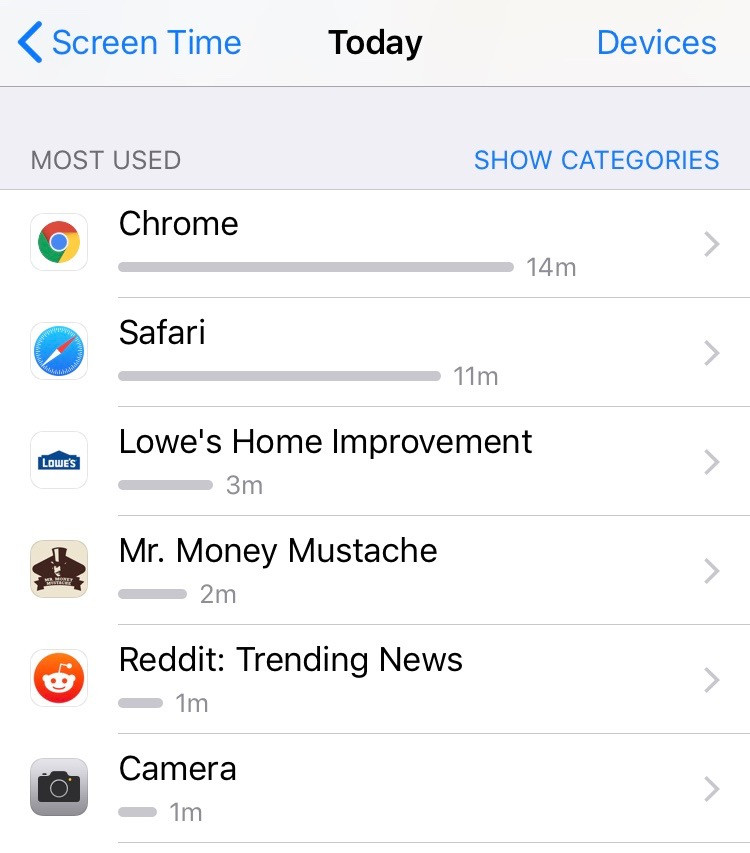
It also has some pretty annoying (effective) enforcement of application category time per day, and “Do Not Disturb”/”Downtime” settings at night. You can tell your phone to not let you use it at night, and it won’t let you open anything (you can still receive phone calls, and can put applications on an exemption list, but in general? Sleep, you fool!). It allows you to set a separate PIN for the Screen Time settings - which means you could, say, let your spouse set the PIN. Or have a friend set a random one for you, if you want hardcore mode. Or set one, write the PIN down, and freeze it in a block of ice (which you keep in your freezer).
As far as I’m concerned, this feature is Apple’s public apology for letting things get so out of hand, and providing a platform that enabled so much abusive behavior by applications. They’ve said, in no uncertain terms, that you are now in charge, and they make it easy to both see which applications are pestering you with notifications (for me, it’s Hangouts, which is fine - it’s person to person communications that I make good use of) and to then silence or turn down those notifications. But you can see what’s pestering you and then decide what to do about it.
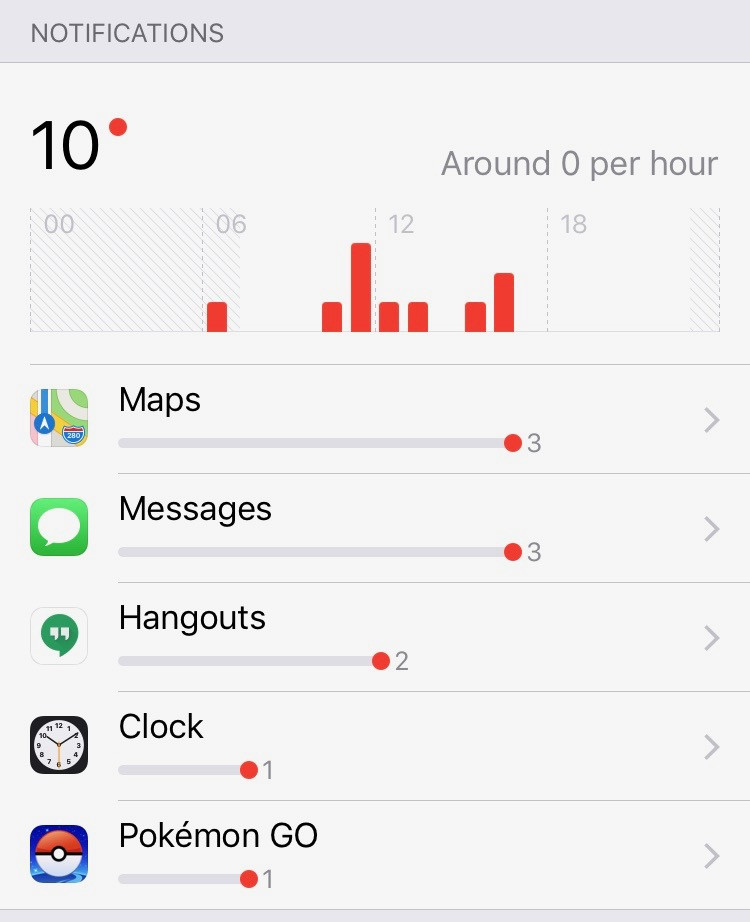
And, if you’re supposed to be asleep, it’s easier to simply tell your phone to shut up. No more 2AM *ping* *bright light* *crystal upgrade timer is done, wanna play?* - and that’s a good thing.
If your phone can run iOS 12, install it, and set this up. It’s amazing how much time can disappear down the rabbit hole of a cell phone in one short week! It’s also amazing just how effective knowing that your phone is tracking your time can be at preventing casual pickups. Screen Time counts how many times you pick your phone up to look at it, and if you know your phone won’t let you do anything in the middle of the night, it reduces the incentive to pick it up at 3 AM.
For Android users - I assume there’s something similar out there. I have no idea what it is. I’ve used Android in the past, I use iOS now, and I just don’t care enough to get into holy wars about the OSes at this point in my life. I expect the next major OS release to have this, though that doesn’t help you if you’re on a phone that’s no longer getting updates.
Final Thoughts
If you’re perfectly happy with your smart phone, with your relationship with social media, and how that works out in your life, you probably haven’t made it to this point in the post. If you’ve been working on restricting how much it impacts your life, hopefully I’ve offered either some extra motivation or some useful tips. And, if you’ve never really considered it, just going along with the “default option” of putting more apps on your phone, having all the social medias, and you’ve lost years of your life and endless amounts of concentration in the process, hopefully I’ve convinced you to start trying something different.
I truly hope we’re past Peak Smart Phone and Peak Social Media, so we can get back to the business of human interactions, in person. That’s what works best - we’re just not wired to compare and compete, on a person to person level, with the whole planet, and it doesn’t work very well at all. Try something different! One could even say… Think Different! ;)
Book Review: Irresistible
If you’re interested in further reading on just how our devices are weaponized against us, I’d suggest “Irresistible: The Rise of Addictive Technology and the Business of Keeping Us Hooked” by Adam Alter (Amazon) (eBay).
It goes into some depth about the whole “triggering addictive behaviors in humans” thing, across a wide range of fields. Reading Irresistible is what really started the thoughts that led to this blog post. I do like my books, and I’ve been able to read more as I’ve stopped spending so much time on low content distractions.
Comments
Comments are handled on my Discourse forum - you'll need to create an account there to post comments.If you've found this post useful, insightful, or informative, why not support me on Ko-fi? And if you'd like to be notified of new posts (I post every two weeks), you can follow my blog via email! Of course, if you like RSS, I support that too.
